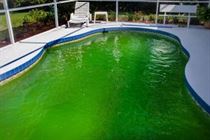Blogpool, Construction, Maintenance, Swimming Pool, Water Testing
How to Choose the Right Pool Cleaning Robot for Your Needs
Choosing the right pool cleaner can significantly ease the burden of pool maintenance, ensuring your water stays clear and inviting. With various options available, it’s essential to understand the different types of pool cleaners and their features to find the best fit for your pool. This guide will help you navigate the choices and make an informed decision.
1. Types of Pool Cleaners
There are three main types of pool cleaners: suction-side, pressure-side, and robotic cleaners. Each has its advantages and disadvantages.
- Suction-Side Cleaners:
- How They Work: These cleaners attach to your pool’s skimmer and use the pool’s pump to create suction that pulls debris into the filter.
- Advantages:
- Affordable and easy to install.
- No additional booster pump required.
- Disadvantages:
- Can be less efficient in larger pools.
- May require frequent filter cleaning.
- Pressure-Side Cleaners:
- How They Work: These cleaners connect to a dedicated pressure line or skimmer, using water pressure to move and clean the pool.
- Advantages:
- Generally more powerful and can clean larger debris.
- Better at reaching corners and steps.
- Disadvantages:
- Requires a booster pump.
- More expensive upfront.
- Robotic Cleaners:
- How They Work: These self-contained units use electric power and are programmed to navigate your pool, collecting debris and dirt in their built-in filter.
- Advantages:
- Highly efficient and require minimal maintenance.
- Operate independently of the pool’s filtration system.
- Disadvantages:
- Higher initial cost.
- Requires access to a power source.
2. Factors to Consider When Choosing a Pool Cleaner
- Pool Size and Shape: Consider the size and shape of your pool when selecting a cleaner. Larger pools may require a more powerful cleaner or multiple units.
- Debris Type: If your pool collects a lot of leaves and larger debris, a pressure-side or robotic cleaner might be best suited for your needs.
- Budget: Set a budget for your pool cleaner. While robotic cleaners offer many features, they can be pricey. Suction-side cleaners are typically the most affordable option.
- Ease of Use: Look for features such as automatic programming, easy maintenance, and simple navigation if you want a cleaner that is user-friendly.
- Warranty and Support: Check the warranty period and available customer support. A good warranty can protect your investment.
3. Maintenance Tips for Your Pool Cleaner
To ensure your pool cleaner operates effectively, regular maintenance is crucial. Here are some maintenance tips to keep your cleaner in top shape:
- Clean the Filters: Regularly check and clean the filters of your cleaner to prevent clogging and ensure optimal performance.
- Inspect Hoses and Cables: Look for signs of wear or damage on hoses and cables. Replace them as needed to avoid malfunctions.
- Store Properly: When not in use, store your pool cleaner in a cool, dry place. Avoid leaving it exposed to direct sunlight for extended periods.
4. Frequently Asked Questions (FAQs)
Q: How often should I use my pool cleaner? A: It depends on pool usage and debris accumulation. Generally, cleaning 1-2 times a week is sufficient.
Q: Can I leave my robotic cleaner in the pool? A: Most robotic cleaners are designed for pool use and can be left in the water. However, for longevity, it’s best to remove them when not in use.
Q: Do I need to vacuum my pool if I have a cleaner? A: While a pool cleaner can significantly reduce the need for manual vacuuming, occasional manual vacuuming may still be necessary, especially in heavily soiled pools.
Conclusion
Choosing the right pool cleaner can make a significant difference in your pool maintenance routine. By considering the type of cleaner that best suits your needs and understanding how to care for it, you can enjoy a clean and inviting pool all season long. Invest in a quality pool cleaner today, and enjoy more time relaxing in your pool and less time cleaning it!












